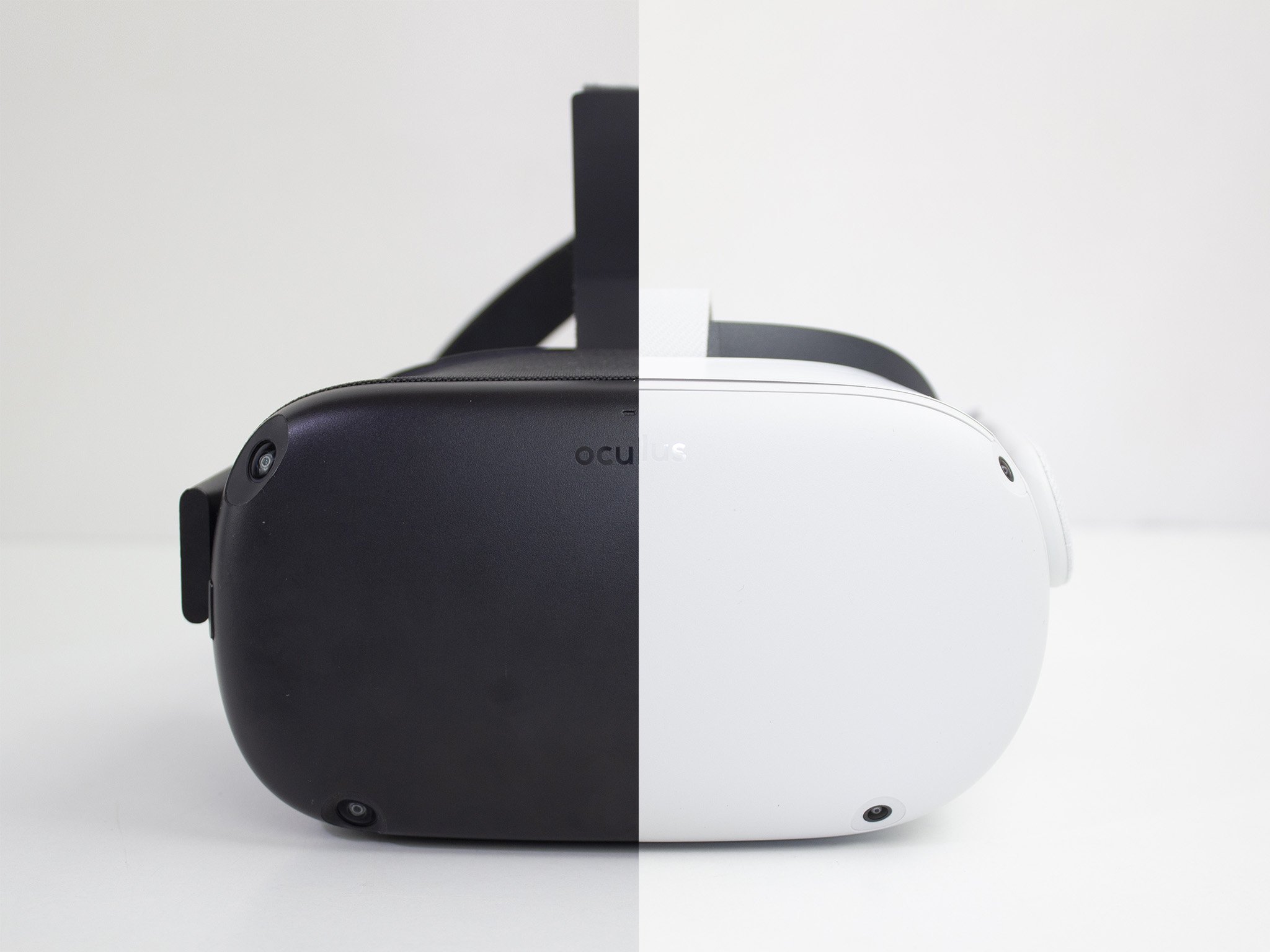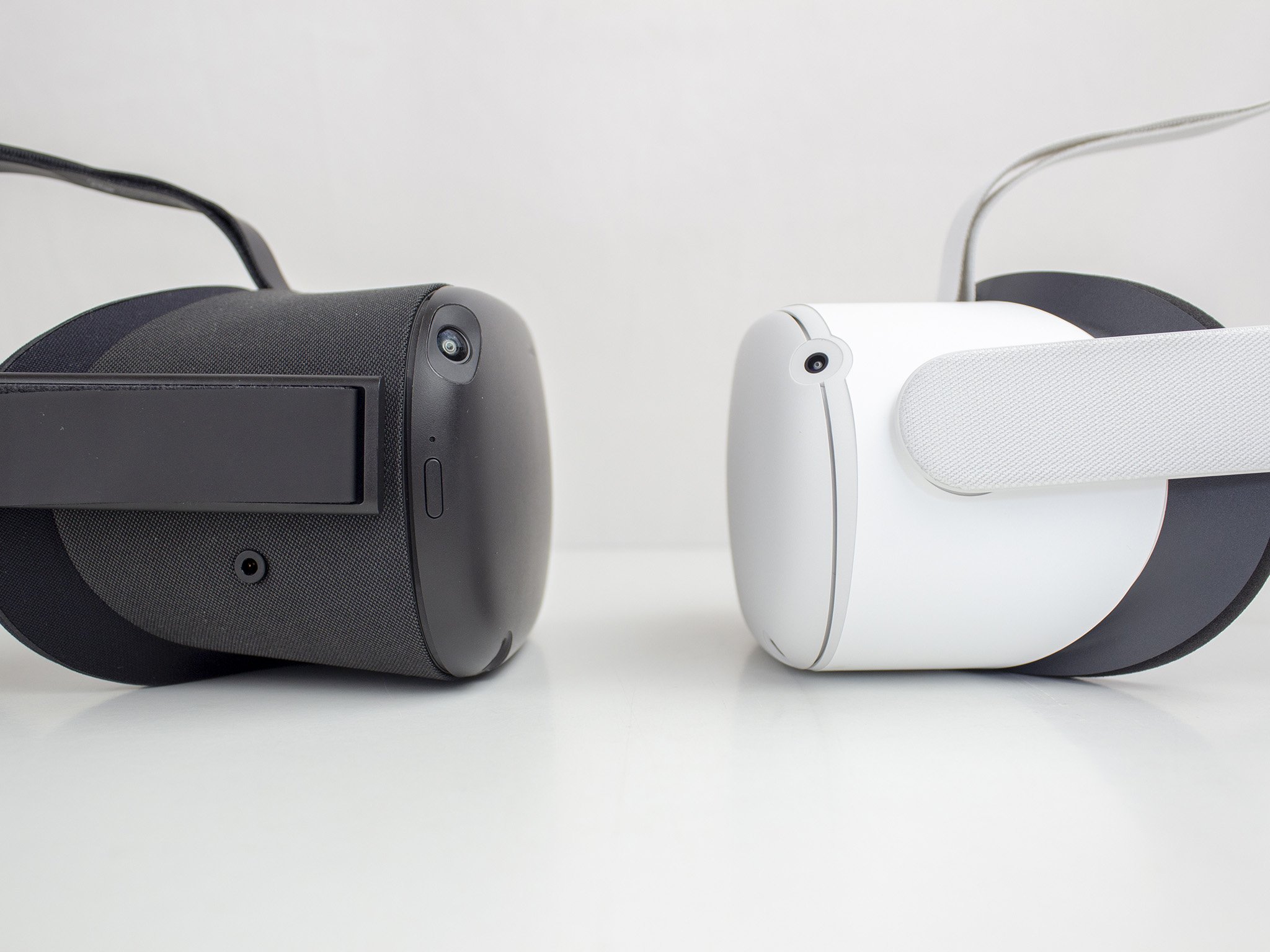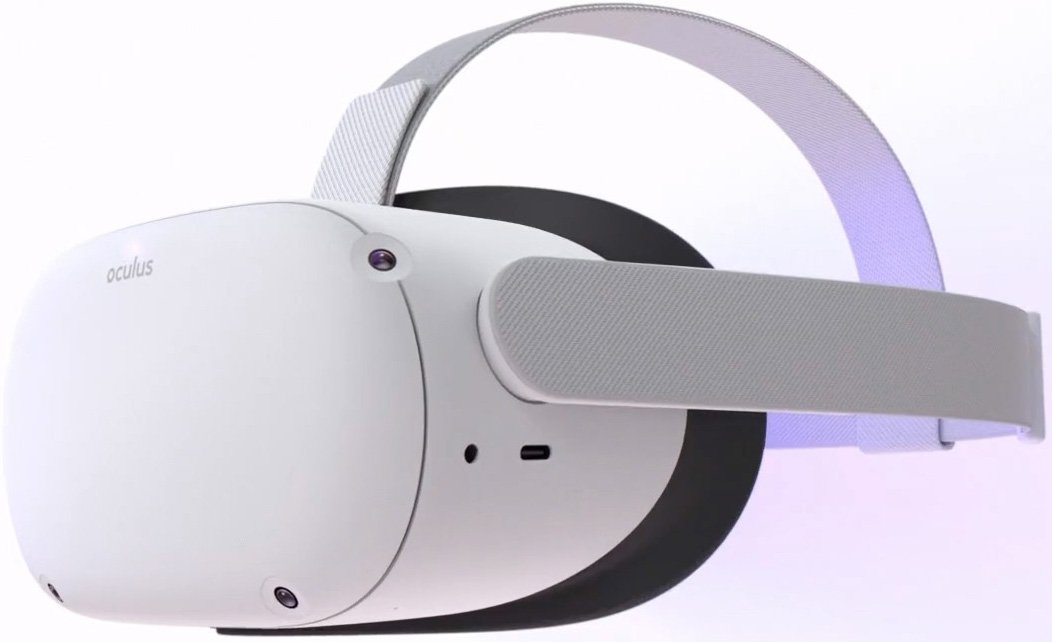- Get link
- X
- Other Apps
- Get link
- X
- Other Apps
Substantial graphics improvements are just the beginning.
If you're dying to find out just how much better Facebook's new VR system is than the original, you're in luck, because our Oculus Quest 2 graphics comparison is designed to do just that. Thanks to the efforts of some seriously amazing developers, quite a few games have already received initial patches that enhance the graphics for owners of an Oculus Quest 2, making Oculus Quest 1 games even more immersive. Heck, you might even need more storage space if games like The Walking Dead: Saints & Sinners are any indication.
But the performance upgrade that comes with a 3-generation leap in chipsets isn't just better graphics — it also means performance improvements across the board. The means better AI, more enemies on the screen at once, more detailed worlds and characters, faster loading times, a massive jump in resolution and overall clarity and, maybe my personal favorite, compatibility with Wi-Fi 6 to finally make 90Hz wireless PC VR gaming possible.
Oculus Quest 2 vs. Oculus Quest graphics comparison The first enhanced games
While the Oculus Quest doesn't launch until October 13, developers have already begun upgrading their games to take advantage of the Snapdragon XR2 chipset inside the Oculus Quest 2. Games like The Walking Dead: Saints & Sinners, Reel Fishing, Gravity Lab, Waltz of the Wizard, and Red Matter (to name a few) have already received patches that add extra detail to character models, bump up the texture resolution, add in new lighting effects, and even significantly increase the overall resolution for better clarity (and actual easy-to-read text).
Let's check out a few, shall we? It's important to remember that these games were built for the significantly lower power Oculus Quest, and future games built from the ground-up for the Oculus Quest 2 will almost certainly look even better. Also, make sure to view the images below in full-screen to see all the differences. In general, captured VR images never quite give you the full effect that you'll see with the headset on your face, so know that these games will look even better when using the Oculus Quest 2 versus what you'll see here.
Red Matter
Sci-fi space puzzler Red Matter was already one of the best looking, if not the best looking Oculus Quest game on the market. It's no surprise then to see this developer significantly enhance the resolution of the game as well as the textures, lending even further detail to the game. As you'll see from the above shots, the original Oculus Quest relied heavily on fixed foveated rendering (FFR) to guarantee good performance.
While FFR is great for keeping performance steady, it significantly degrades image quality in your peripheral vision and can sometimes even cut into the center cone of vision. You'll see this difference in the first two screenshots, which show significant pixelation on anything outside of the center cone of vision on the original Oculus Quest.
The Oculus Quest 2 version appears to do away with FFR completely, making the entire image look crisp and clean. In addition to that, there's some obvious increases in texture quality around the scene, particularly in the mountains and cliff facades, as well as other materials like the outside of the ship you crashland on.
Gravity Lab
Gravity Lab is a Rube Goldberg-esque puzzler that sees players creating machines to deliver different types of marbles to containers. Since it's in space, you'll find plenty of gravity-based puzzles in its 3-tiers of levels, including different difficulty levels that challenges players to use fewer pieces to get the job done.
From what I can tell having played them both side-by-side, the Oculus Quest 2 version of Gravity Lab looks identical to the PC VR version. That includes improvements in lighting, cube-mapped reflections on tubes and other reflective surfaces, glass shaders, dynamic lighting, and some other effects. There's no difference in texture quality from what I can tell — it's all about effects and a resolution bump in this game.
In fact, if you look at the video around the 16-second mark (or the second picture below), you'll notice that the dynamic lighting glows and reflects off several surfaces on the Quest 2 version, illuminating your hands, reflecting in the glass, and generally looking realistic. You can see the green and red lights glowing in all the surfaces, and it really just looks fantastic. The Quest 1 version, on the other hand, features flat lighting with no reflections or anything of the sort and comes off looking a bit sterile.
The Walking Dead: Saints & Sinners
The Walking Dead: Saints & Sinners has been one of the most anticipated Oculus Quest releases since it originally launched on the PC earlier this year. When compared to the PC version, the Oculus Quest versions visuals are pretty tame but the experience is, thankfully, exactly the same. That fact that Skybound Entertainment was even able to get this physics-heavy action RPG on the Quest in the first place is pretty astounding.
The demo on the Oculus Quest store starts you about an hour into the game and puts you in the middle of a suburban part of New Orleans with a mission to retrieve a wedding ring from a woman's zombified husband. Upon initial glance, there seem to be few differences between the Oculus Quest and Oculus Quest 2 versions of the game, but a quick walk around the area reveals several detail and lighting differences to behold.
The ragged streets of post-apocalyptic New Orleans feature more debris and other realistic-looking stuff strewn around on the Quest 2 version. There are even more objects in the world, as you'll note from the first image below, where an entire telephone pole and palettes (left side) and a tree (middle) are completely missing on the Quest 1 version. Likewise, the second image shows the dumpster on fire making the palettes around it glow on the Quest 2, while the third image shows lighting enhancements like godrays coming through the dusty windows in the third shot on the Quest 2.
Waltz of the Wizard
Waltz of the Wizard is an innovative wizard simulator that sees players inside the home of a wizard, combining ingredients to make potions, performing spells, and visiting locations to engage in combat and other puzzles. Waltz of the Wizard was one of the first games to enable hand tracking on the Oculus Quest, and now it's one of the first games to be enhanced for the Quest 2.
The Quest 2 enhancements for Waltz of the Wizard include a 150% resolution increase, additional objects and fine detail in the main room, lighting bloom (see the candles and lanterns), realtime lighting from spells and other objects, anisotropic textures, and improved particle effects all around. In the first image above, you'll notice the pictures on the back wall are significantly sharper on the Quest 2. This effect is even more exasperated when using the headsets and show what anisotropic filtering can do for distance texture and object quality.
Oculus Quest 2 vs. Oculus Quest graphics comparison Looking to the future
On the technical side of things, Oculus has already updated the performance targets for developers in their official documentation. Some developers on Reddit have been able to crunch the numbers, and the difference between the Oculus Quest and Oculus Quest 2 is pretty astounding. Facebook's performance targets show that the Oculus Quest 2 can render roughly 10x the number of triangles when compared to the Oculus Quest 2.
Statistically, that's the kind of generational leap we had hoped for when dreaming of a next-generation standalone VR system, and it seems that Qualcomm and Facebook were able to deliver it. While polygon counts have become a less important metric for gaming consoles in recent generations, the original Oculus Quest could only render between 50,000 and 100,000 triangles per frame. Oculus Quest 2 is capable of around 1,000,000 triangles per second, and that doesn't even count in the new shader abilities and other technical details we won't delve into here.
The chart above from Qualcomm shows performance differences between the Snapdragon XR2 in the Oculus Quest 2 and the Snapdragon 835 in the original Oculus Quest. That theoretical performance difference is pretty astounding, especially when you look at the AI metric. An 11x improvement is no joke, and it seems to go perfectly hand-in-hand with the 10x improvement in polygon count that we mentioned above.
How, exactly, does AI performance translate into games? The developer of Sun Shard used a gladiator-style arena full of zombified skeleton enemies to help illustrate the difference in a palpable way. The video below shows that the game on the original Oculus Quest is only able to successfully able to display and handle AI and physics calculations for two enemies at a time, making the arena feel a tad sparse. The Oculus Quest 2 is able to handle eight enemies without problem, and that's just something that was built in a single day after the developer received his Quest 2.
This is by no means a scientifically conducted test, but this shows off a difference in CPU between two headsets (😉) simulating the max amount of “physically based” enemies before the quality of simulation begins to degrade. #VR pic.twitter.com/sry1SGmLYG
— RJ (@RJdoesVR) October 1, 2020
We've seen from the PC side of things that AI calculations mean more than just smarter enemies (or more enemies) — it also means ways to significantly enhance both image quality and performance through technologies like DLSS 2.0. Facebook was the first company to implement foveated rendering in a consumer-grade headset with the original Oculus Quest to enhance performance, and Facebook's AI division has already shown that they're working on a technology similar to NVIDIA's DLSS 2.0 for the Oculus Quest family.
There's no doubt that this will further enhance image quality and performance of Quest 2 games, going forward, since the chipset that powers the Quest 2 is so good at making the AI-based calculations needed for this type of tech. The Oculus Quest 2 will be out on October 13, and is most certainly Facebook's attempt at making a fully-realized VR console for the masses.
Easy, powerful VR
Oculus Quest 2
Gaming like you've never experienced before
Facebook has improved seemingly everything with the second-generation Oculus Quest, making this the VR console to get.
- Get link
- X
- Other Apps
















